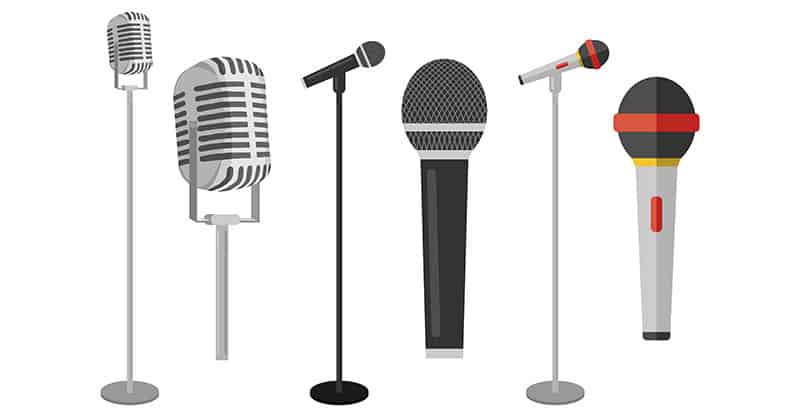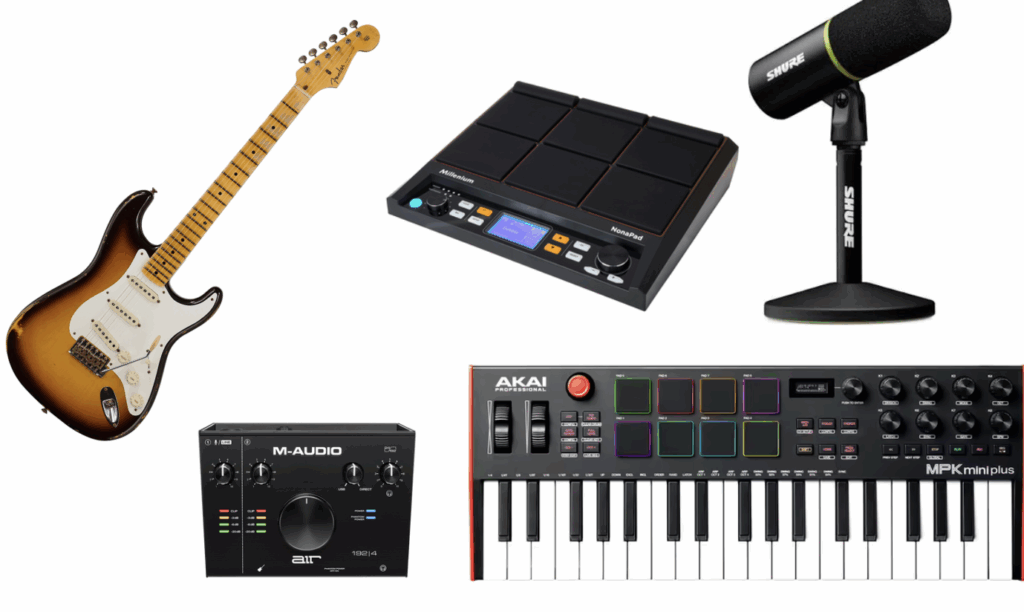Are you asking yourself how to produce music of good quality building up an economic home studio of less than a 1000 euro of cost? Well you’re in the right place!
In this guide, I’ll show you the essential gear you need, why it matters, and how to make the most of a small budget without compromising your creativity.
Step 1: Choose Your DAW
The DAW (Digital Audio Workstation) is your creative Playground, the place where you record, arrange, and produce everything. And every Economic Home Studio starts with it. A lot of offering ProTools, Cubase, Ableton Live Standard – Great for electronic, experimental, and loop-based music you can find it even free with some keyboards (we’ll see it later) , Logic Pro (~€229, Mac only) – A complete, affordable option with excellent stock sounds- and Garageband if you are very very beginner.
So it’s up to you! Just check and don’t you worry too much about your choice: what really matters is your creativity! And knowledge of your tools.
👉 Pro Tip: Don’t underestimate stock plugins—they are more than enough for high-quality production.
Step 2: Fundamentals of Microphone Technology

Microphones are essential transducers in audio engineering. They convert acoustic energy into electrical signals, making them fundamental for recording voices, instruments, and ambient sounds. Choosing the right microphone is a big step in creating an effective Economic Home Studio.
1. Microphone Types
Dynamic Microphones
- Work with electromagnetic induction.
- Advantages: Durable, handle high volume, no external power needed.
- Best for live sound, drums, and guitar amps.
Condenser Microphones
- Use a diaphragm and backplate capacitor system.
- Advantages: High sensitivity, wide frequency range, excellent for vocals.
- Best for studio recordings but more fragile.
Ribbon Microphones
- Use a thin ribbon in a magnetic field.
- Known for warmth and detail, but delicate.
2. Polar Patterns
When building your Economic Home Studio, you must also consider polar patterns:
- Cardioid: Picks sound from the front, rejects rear—perfect for vocals.
- Super/Hypercardioid: More directional, good for noisy spaces.
- Omnidirectional: Captures all around, great for room ambience and choirs.
👉 For most beginner producers, a Shure SM58 (dynamic, cardioid) is the smart and affordable choice (~€110).
Step 3: Audio Interface – The Heart of Your Economic Home Studio
Your audio interface connects your mic, instruments, and headphones to your computer.
- Focusrite Scarlett 2i2 (~€179) – Easy to use, reliable, great preamps.
- Audient iD4 MKII (~€220) – Amazing sound quality, slightly higher cost.
Pick one and you’re set.
Step 4: MIDI Keyboard – Your Creative Tool

A MIDI keyboard lets you compose melodies, chords, and beats.
- AKAI MPK Mini MK3 (~€99) – Compact, pads and knobs included.
- M-AUDIO or Arturia KeyLab Essential 49 (~€199) – Larger keys for piano-style playing.
Both are excellent additions to an Economic Home Studio and it will be amazing to discover how much you can create with just a good controller.
Step 5: Headphones vs. Monitors
When starting out, headphones are better than cheap monitors:
- Audio-Technica ATH-M50x (~€149) – Balanced and reliable.
- Beyerdynamic DT 770 Pro (~€139) – Comfortable and clear.
Later, upgrade to monitors like Yamaha HS5 (~€350/pair).
Step 6: Don’t Forget the Accessories
Small details matter:
- Mic stand (~€25)
- Pop filter (~€15)
- Cables (~€20–30)
These complete your Economic Home Studio and make your workflow smoother.
Example Budget Breakdown
- GarageBand – Logic Pro – Ableton: from 0 to €229
- Shure SM58: €110
- Focusrite Scarlett 2i2: €179
- AKAI MPK Mini MK3: €99
- Audio-Technica ATH-M50x: €149
- Accessories: ~€60
Total: €826 ✅
You’ve got a complete Economic Home Studio under €1000.
Final Thoughts
The best tool is always your creativity. A minimal, carefully chosen setup will take you much further than a room full of expensive gear you don’t know how to use.
With this Economic Home Studio, you can record vocals, produce beats, arrange full songs, and start building your sound. Once you hit the limits of your gear, then you can upgrade. And if you want to learn more on how to launch your project, you should read this post about Notion.



